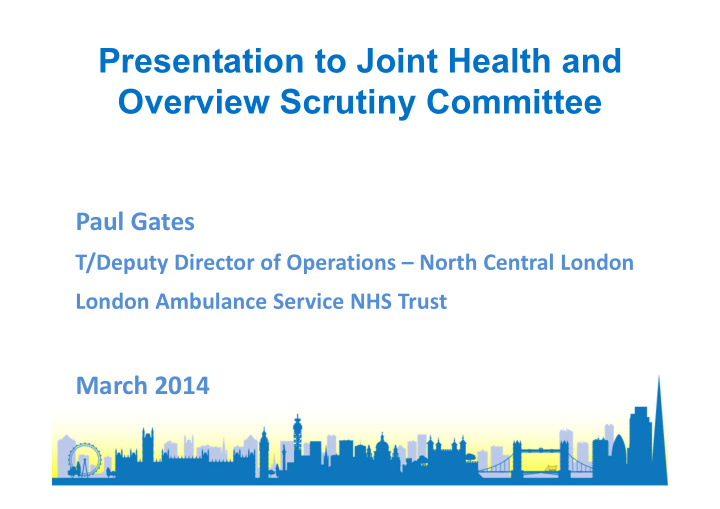



Presentation to Joint Health and Overview Scrutiny Committee Paul Gates T/Deputy Director of Operations – North Central London London Ambulance Service NHS Trust March 2014
Intelligence Conveyance • Aim to proactively balance surges in ambulance arrivals into Emergency Departments and also provide a cap on the number in any rolling hour. • This is not a policy but a process that was brought about to assist with preventing queuing of ambulances. • Subject to external review which has looked at a number of factors. • Its having the desired effect of minimising the surge impact of LAS ambulance arrivals at EDs across London.
Intelligence Conveyance • Current design of IC is likely to be most effective at EDs that are not on the boundaries of London and where there are a greater number of alternative EDs nearby that are less busy. • The current design is likely to be less effective at EDs that are more isolated, are surrounded by other busy EDs and/or are receiving ambulances from other areas.
Improvements • Increased communications and training of staff regarding alternative EDs and ACP use. • Feed in destination and arrival data for out of region ambulances. • Consider more tailored thresholds to account for local issues. • Produce list of 360 degree options.
LAS use of UCC in BEH 200 150 100 50 0 Apr May Jun Jul Aug Sep Oct Nov Dec Jan Feb Mar Q1 Q2 Q3 Q4 -50 Chase Farm UCC TOP 18 CONDITIONS ONLY Barnet UCC EXCLUSION CRITERIA PATHWAY North Mid UCC EXCLUSION CRITERIA PATHWAY
What else are we doing? • ACP usage is increasing (126 patients in January, 176 in February at NMUH) • Put in local senior clinician to support crews at Barnet, work ongoing to introduce same at NMUH in April. • Working together to improve. • Ensuring LAS staff have the criteria for UCC use and change culture. • Already London wide managing patients differently. • Working with both sites to support change in processes.
Recommend
More recommend